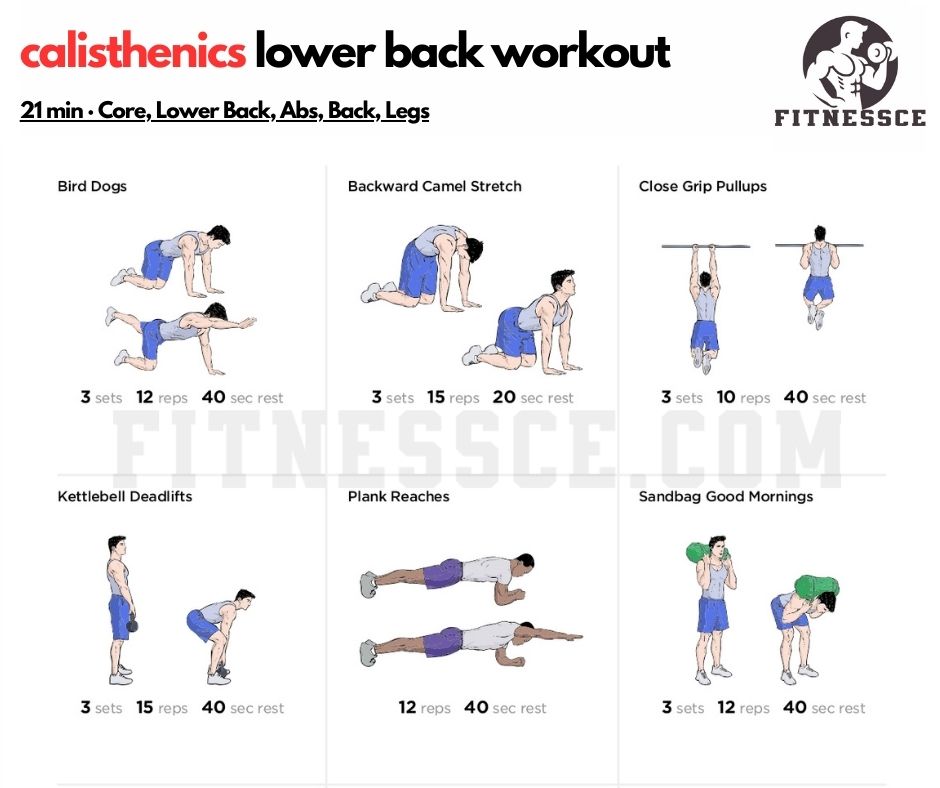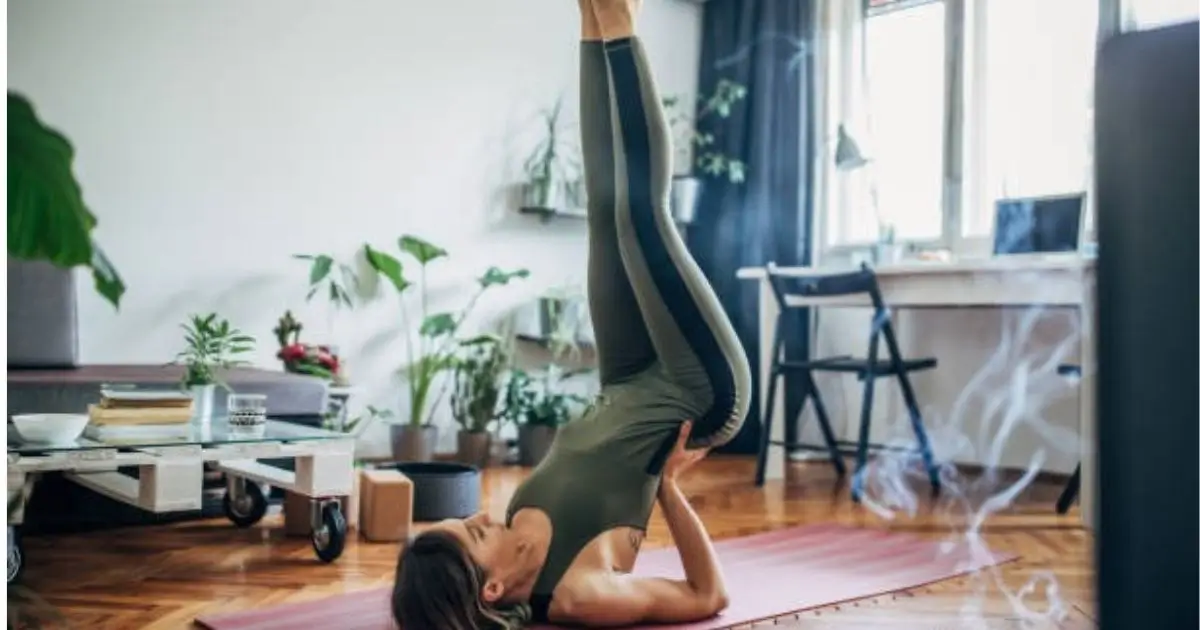Introduction
An estimated 80% of persons calisthenics lower back workout discomfort at some point in their life, usually compromising daily activities, employment, and general quality of life. Whether your back hurts constantly or you just want to get stronger to avoid problems in the road, you have to find a good exercise program.
Now let me introduce callisthenics, a type of exercise where resistance comes from your own body weight. Regardless of degree of fitness or location, this easily available, equipment-free method provides a strong option for lower back health.
Table of Contents
Callisthenics offers many advantages for lower back health, including:
• Targeted muscular strengthening free of high weights
Better core stability and posture; more flexibility and mobility; less pain and discomfort; future injuries prevented
This all-inclusive book will go over the best callisthenics exercises for lower back strength, how to plan your sessions, and key ideas to keep in mind for best outcomes.
Recognising Lower Back Problems
It’s crucial to know what first causes lower back discomfort before delving into particular exercises:
Muscle sprains and strains: Usually due from incorrect lifting or rapid motions
•Bad posture: Particularly common among those who spend a lot of time sitting
Your core supports your spine; weakness results in compensation; a sedentary lifestyle weakens back muscles over time; spinal problems include herniated discs, sciatica, and spinal stenosis.
•Important Notice: Professional medical advice cannot be replaced by the content in this page. See a healthcare professional before beginning any new fitness regimen if you have ongoing, severe back discomfort. Back sufferers should engage with a physical therapist to create a safe, customised strategy.
Why does Callisthenics for Lower Back work?
While numerous forms of exercise help with back health, callisthenics has special benefits:
1. Low impact: reduces joint tension while yet offering sufficient resistance.
2. Extremely scalable: Exercises can be altered for any degree of fitness.
3. Not any tools required: Get in good shape wherever.
4. Builds actual strength applicable to daily tasks.
5. Core integration: Obviously target lower back supporting muscles.
6. Progressive overload: As strength rises, can progressively raise challenge.
Because bodyweight exercises develop the body as an integrated unit rather than isolating particular muscles, studies show they are especially beneficial for rehabilitation and prevention of lower back pain.
Essential Calisthenics Principles for Lower Back Health
Before jumping into specific exercises, keep these crucial principles in mind:
Proper Form Takes PriorityWith lower back exercises, proper form isn’t just about effectiveness—it’s about safety. Incorrect technique can worsen existing issues or create new ones. Start with easier variations and focus on perfect execution before progressing.
Increasing Overload
Like with any strength exercise, slow improvement is essential. This can involve adding sets, increasing repetitions, slowing the speed, and moving to more difficult variations.
Attend to Your Body
When it comes to lower back workouts, the line separating good labour from negative strain is really narrow. Never push through acute pain; instead, separate between joint/nerve discomfort (bad) and muscular tiredness (good).
Warm-up and cool-down exercises
Prepare your body always with five to ten minutes of light aerobic activity then dynamic stretching. Use mild static stretches following your exercise to help in healing and preserve flexibility.
Callisthenic Exercises for Lower Back Pain
The exercises below move from novice to advanced. Starting at your suitable level, progressively raise your strength and confidence level.

Starting Exercises for Novices
1. Postural tilts for the pelvis
Target muscles: lower back, deep core stabilisers
Lie on your back with knees bent and feet flat on the floor; tighten your abdominal muscles and press your lower back into the floor; hold for five to ten seconds then release; complete ten to fifteen repetitions.
Typical faults are lifting the hips off the ground or substituting momentum for control.
Modifications: To challenge yourself, stand against a wall.
2. Bird Dog
Target muscles: glues, core stabilisers, Erector spinae
Start on hands and knees in a tabletop position; simultaneously stretch one arm forward and the opposing leg backward; keep a neutral spine and steady hips; hold for three to five seconds before returning to start; do eight to ten repetitions per side.
Typical blunders: letting the hips rotate or allowing the back to slink.
Changes: Extend only the arm or the leg to simplify things.
3. Bridges of the Glutes
Lower back, hamstrings, glutes—target muscles
Lie on your back with knees bent and feet flat on the floor; press through your heels to raise your hips towards the ceiling; squeeze your glues at the top; lower with control; do 12 to 15 repetitions.
Typical errors are Either pushing with the lower back instead of the glues or hyperextending the back.
Changes: Around the knees, wrap a resistance band to boost hip stabiliser activation.
4. Cat-Cow Stretch
Target muscles: Core, whole spine
Start on hands and knees in a tabletop position; inhale as you drop your belly, elevate your tailbone and look (cow); exhale as you curve your spine, tuck your chin and tailbone (cat); flow between positions for 10 to 15 repetitions.
Typical errors: moving too fast or neglecting to engage the core
Alterations: For people with wrist problems, sit in a chair.
Five: Dead Bug
Deep core stabilisers and transverse abdominis are target muscles.
Lie on your back with arms stretched towards ceiling; raise legs with knees bent at 90 degrees; gently lower one arm above while extending the opposing leg; return to starting position and alternate sides; do 8–10 repetitions per side.
Typical blunders: letting the lower back arch off the floor
Keep one foot on the floor to simplify things.

Between Exercises
One Superman
Erector spinae, glues, upper back target muscles
Lie face down with arms extended overhead; simultaneously raise arms, chest, and legs off the floor; hold for two to three seconds at the top; lower with control; repeat 10 to 12 times.
Typical errors are Hyperextending the neck or applying momentum
Modifications: To lessen difficulty, lift either the upper or the lower body.
2. Reverse Extensions
Target muscles: glutes, erector spinae
Lie face down with hands by your sides; raise your chest off the ground while keeping your hips down; look slightly forward, not up; hold for one to two seconds; then perform ten to fifteen repetitions.
Typical errors are using momentum or hyperextension of the neck.
Changes: Under your chin, place hands for support.
3. Rows on Bodyweight
Target lats, rhomboids, rear deltoids, lower back stabilisers.
Directions: Position yourself under a strong table or bar; grab the edge with arms outstretched and body straight line; bend your elbows to draw your chest towards the bar or table edge.
Eight to twelve repetitions; lower with control; squeeze your shoulder blades together.
Typical errors: slumping shoulders or sagging hips
Modifications: Change your body’s angle to either boost or decrease challenge.
Target muscles for modified side planks include quadratus lumborum, oblues, lateral core
Start in a side plank position with knees bent; rest on your forearm with elbow under shoulder; raise hips to produce a straight line from knees to shoulders; hold for 20 to 30 seconds per side.
Typical errors: allowing the hips droop or twisting forward or backward
Change to extend legs for a full side plank to challenge yourself.
Advanced Notes
1. Hypers in Reverse
Target muscles: glues, hamstrings, Erector spinae
Directions: Lie face down on a bench or table with hips at the edge; grab the edges for stability; keep upper body steady while raising legs towards the ceiling; control the action throughout; do 10–12 repetitions.
Typical mistakes: swinging the legs or applying momentum
Changes: Bend knees to cut leverage and difficulty.
2. Good mornings based on body weight
Target muscles: Hamstrings, glues, Erector spinae
Directions: Stand with feet shoulder-width apart; place hands behind your head or over your chest; hine at the hips keeping a flat back.
Lower until you feel a stretch in the hamstrings, then return to standing by using the glues and hamstrings; do 10 to 15 repetitions.
Typical errors include rounding the back or overdoing knee bending.
Changes: Increase the strain by using a resistance band.
3. hollow body hold
Deep core stabilisers and hip flexors are target muscles.
Lie on your back with arms extended above; press your lower back into the floor; lift your shoulders and legs off the ground; form your body into a “banana”; hold for 20 to 30 seconds.
Typical faults: letting the lower back arch
Changes: To simplify it, hold arms by your sides or bend knees.
4. Changing Dragon Flag
Target muscles: Lower back included in the whole core
Lie on a bench and grip behind your head; lift legs and hips towards the ceiling; slowly lower your straight body while keeping tension; stop when shoulders are the sole point of contact; return to starting position; do six to eight repetitions.
Common errors: Breaking utilising momentum or at the hips
Bend knees to lessen strain and difficulties.
Sample Calisthenics Lower Back Workouts
Beginner Workout (Pain Relief Focus)
| Exercise | Sets | Reps | Rest |
| Cat-Cow Stretch | 2 | 10 flows | 30s |
| Pelvic Tilts | 2 | 15 | 30s |
| Glute Bridges | 3 | 12 | 45s |
| Bird Dog | 2 | 8 per side | 45s |
| Dead Bug | 2 | 8 per side | 45s |
Perform this workout 2-3 times per week with at least 24 hours between sessions.
Intermediate Workout (Strength Building)
| Exercise | Sets | Reps | Rest |
| Bird Dog | 2 | 10 per side | 30s |
| Supermans | 3 | 12 | 45s |
| Back Extensions | 3 | 15 | 45s |
| Bodyweight Rows | 3 | 10 | 60s |
| Modified Side Plank | 2 | 30s hold each side | 45s |
Perform this workout 3-4 times per week, alternating with other training if desired.
Advanced Workout (Complete Development)
| Exercise | Sets | Reps | Rest |
| Bodyweight Good Mornings | 3 | 15 | 45s |
| Reverse Hypers | 3 | 12 | 60s |
| Modified Dragon Flag | 3 | 6-8 | 90s |
| Hollow Body Hold | 3 | 30s hold | 60s |
| Supermans | 2 | 15 | 45s |
Perform this workout 2-3 times per week, allowing 48 hours for recovery between sessions.
Integrating Core Work
A strong core is essential for lower back health, as these muscles work together as a unit. Include these core-focused exercises in your routine:
- Planks: Front, side, and reverse variations
- Mountain Climbers: Focus on maintaining a stable lower back
- Leg Raises: Keep lower back pressed into the floor
- Russian Twists: Start with feet on the floor for beginners
- Flutter Kicks: Maintain posterior pelvic tilt throughout
When performing any core exercise, the key is to maintain engagement of the deep stabilizing muscles by drawing your navel toward your spine and avoiding arching your lower back.

Posture and Ergonomics
Exercise alone won’t solve lower back issues if poor posture persists throughout the day. Implement these tips for better spinal alignment:
Posture for Sitting
Place your back against the chair and use a small spine support if you need it. Keep your feet flat on the floor and your knees at or just below hip level. Stand up often (every 30 minutes is best).
Stand with your weight evenly on both feet. Keep your shoulders down and relaxed. Lightly engage your core to support your spine. Don’t lock your knees.
Techniques for Lifting
Keep the weight close to your body, hinge at the hips instead of the waist, engage your core before lifting, and don’t twist while lifting.
Ergonomics in the Workplace
– Set the computer so it’s at eye level
– Sit in an ergonomic chair with back support
– Think about getting a standing desk
To avoid neck pain, use speakers when you talk on the phone.
Get better and avoid getting hurt
As important as the workouts are, recovery is just as important. Add these things to your daily routine:
Relax and sleep
• Take 24 to 48 hours off between lower back workouts
• Make sure you get enough good sleep (7-9 hours) on a firm mattress
• Sleep on your side with a pillow between your knees to keep your spine straight
Spreading Out
After a workout, do these stretches:
• Pose for kids (30 to 60 seconds)
Ten seconds on each leg for the knee-to-chest stretch.
• Gentle twists of the spine (30 seconds on each side)
• Stretching the hip flexors for 30 seconds on each side
Myofascial Release on Your Own
• Roll out your glutes, hamstrings, and quadriceps with a foam roller.
• Use a tennis ball to work on particular trigger points.
• A lacrosse ball for working on deeper wounds
Drinking water and food
• Drink plenty of water to keep your spinal discs healthy.
• Eat foods that reduce inflammation, like fatty fish, berries, and leafy greens.
• Talk to your doctor about omega-3 pills for joint health.
Conclusion
One of the easiest and most effective ways to make your spine stronger and more resilient is to do a well-designed callisthenics lower back workout. If you follow the routines and tips in this guide on a regular basis, you can greatly reduce pain, improve your posture, and make your life better in general.
Keep in mind that consistency is more important than intensity. A moderate method that is used regularly will produce better results than intense sessions that are done once in a while. Begin at the right level for you, focus on good form, and as your strength grows, add more difficult moves.
Want to improve the health of your lower back even more? Get our free lower back callisthenics program, which comes with video tutorials and tools for keeping track of your progress. Get ready for a stronger, healthier back!
If your back hurts, have you tried callisthenics? Leave a comment below with your story!


















